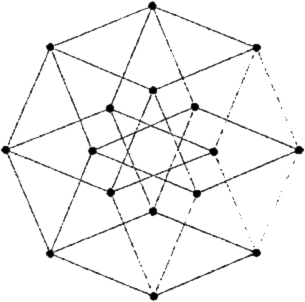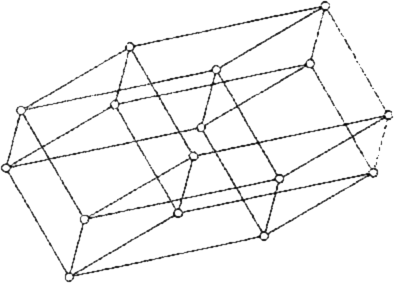(lines follow lines, and in the piling lines) [32317-24]
Ten words and three numbers. [14]
“inanimate things existed before living ones” [49]
The risen stone, the shriven God. [59]
An infinity of strings, harps without angels. [9]
I am not responsible. I am not responsible. I am not responsible. I am not responsible. [61]
It has taken this long. [59]
The fugue of All. Its unyielding tone. [64]
You turn the page. [1]
The Book of Fire. [17]
The machine that will never think. [4]
Reconsider your position. [17]
The machine we believe will never think. [26]
“the machine is the measure of all things” [30]
The machine's needs. [11]
 [18]
[18]
Exclusive Read Concurrent Write [18]
Exclusive Read Exclusive Write [1]
The Book of Sand. [2]
The book that you write, to discover. [52]
The poem, copied, reproduces: seeded through books. [43]
Readers discuss, compare data; connect and reconnect. The poem is reshaped. Some variations wither. Others burn as stars, then are gone. [15]
“The machine world reciprocates man's love by expanding his wishes and desires, namely, in providing him with wealth.” [26]
“the machine is in the machine” [33]
The friction: working, the machine breaks down. [20]
The machine that you beg to be God. [6]
Any device used to perform a specified task. [10]
The machine is waiting for when it has a use for you. [6]
Any device to which the word is applied. [27]
The water [49]
There would be singing and whirring in the streets. [17]
The machine that, thinking, chooses suicide. [37]
The [ ] is the machine. [49]
If only I knew what you wanted. [29]
What you will never know. [48]
The cliché that you call your soul. [63]
My ribs are splayed open like wings. [64]
But are mistaken. [1]
The Book of Glass. [21]
[EFF]ACE [19]
The formation of weapons. [53]
How mother would always cry. [35]
The cyborg as travesty. [40]
The machine continues, and breaks down. [32]
The work of art in the age of mechanical reduction. [62]
The computation of parallel problems, the differing solutions. [11]
 [62]
[62]
The universe as one machine among many. [32]
The machine as psychosis. [5]
Read the instruction and decode it. [13]
“The entire current 'psychological' situation is characterized by this short-circuit.” [14]
Apomixis [23]
True intelligence [62]
The pages of the book. [16]
As you turn the pages,
paths cleave, encountering your immobile form. [28]
In the garden of forking paths, you appear always to move forward. [4]
The human and the machine as symbiotic, cyborg. [35]
The cyborg as science, not fiction. [27]
shorting your circuits [63]
My spine is broken. [1]
Statistics & Methodology
- Seed: 32317
- Length: 59 verses
- Repeats: Not Permitted
- Starting Position: Subset #24
- Most Frequented Subsets: (at 3 items)
- Subset #1
- Subset #17
- Subset #49
- Subset #62
- Emptied Subsets: (in order of occurence)
- Subset #17
- Subset #1 (Endpoint)
- Subset #63
Colophon
This online application automatically generates rule-abiding nonlinear readings of Ex Machina, as originally written by Jonathan Ball, whose first print edition was published by Book*Hug in 02009.
This literary stress-test assists in performing a qualitative analysis under the following hypothesis: nonlinear constructions of Ex Machina are semantically and poetically inferior to the first published linear construction. The methodology is adjustable due to lack of instruction in the original text, but the current simulation available is limited due to media porting instability. (In this case, a textuality deficiency with regards to physical media from the text's self-referential nature of itself being a printed and bounded book.)
The equivalent null-hypothesis would therefore state that rule-abiding nonlinear structures would make an equal or greater amount of sense as a linear reading of the original manuscript.
The methodology for this experiment executes a random walk through the Ex Machina text using a series of dice rolls from a pseudorandom number generator. As parameters, the seeding number for the RNG may be provided in order to replicate the exact results of previous attempts. The algorithm will run to either a maximum of 512 units in the random walk or until the text itself is exhausted, depending on if repeated items are allowed or not.
- Original Homepage: http://jonathanball.com/
- ISBN: 9781897388488
- Publisher: https://bookhugpress.ca/shop/author/jonathan-ball/ex-machina-by-jonathan-ball/
- License: http://creativecommons.org/licenses/by-nc-sa/2.0/ca/
Return to Literature Index